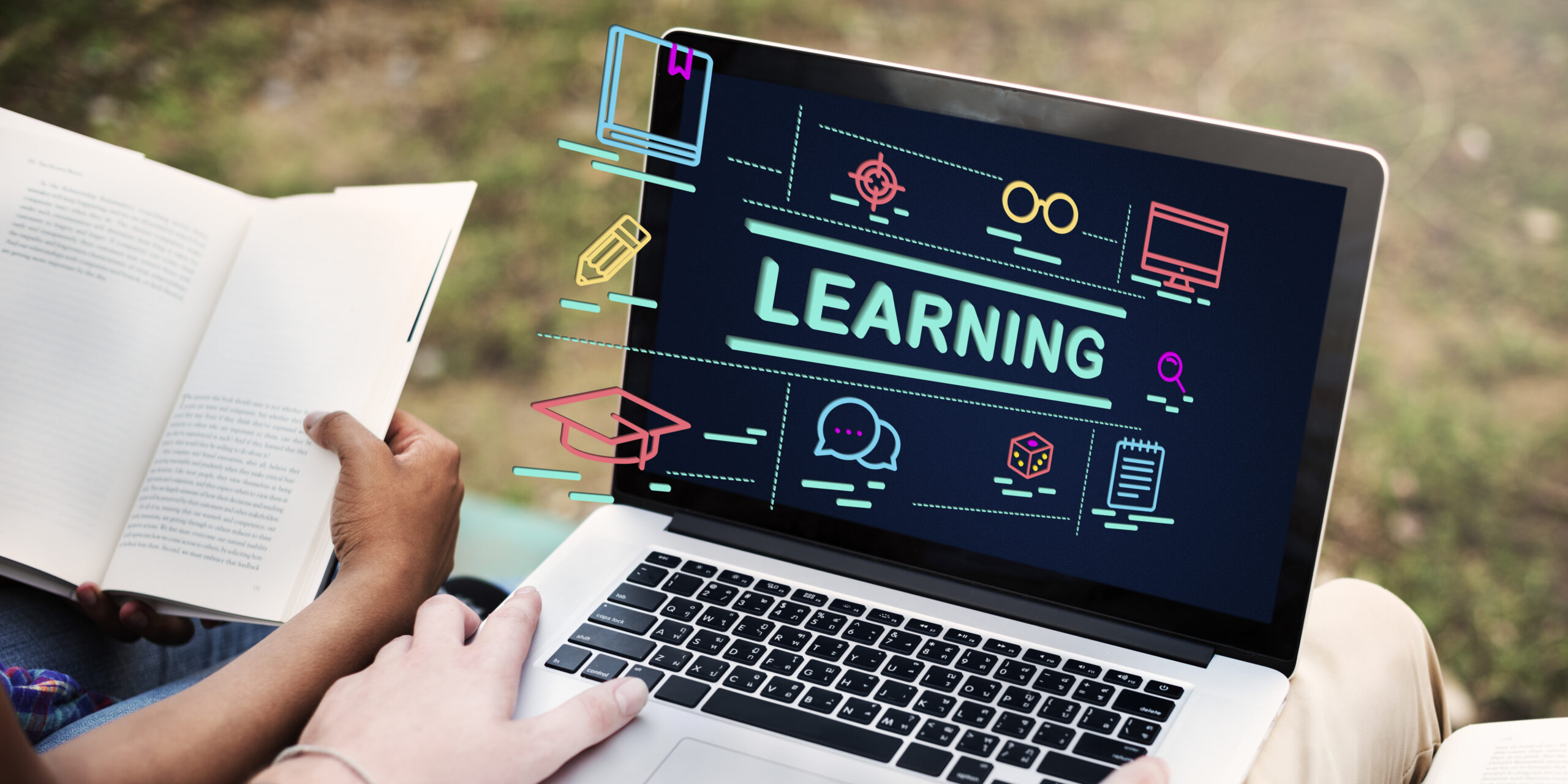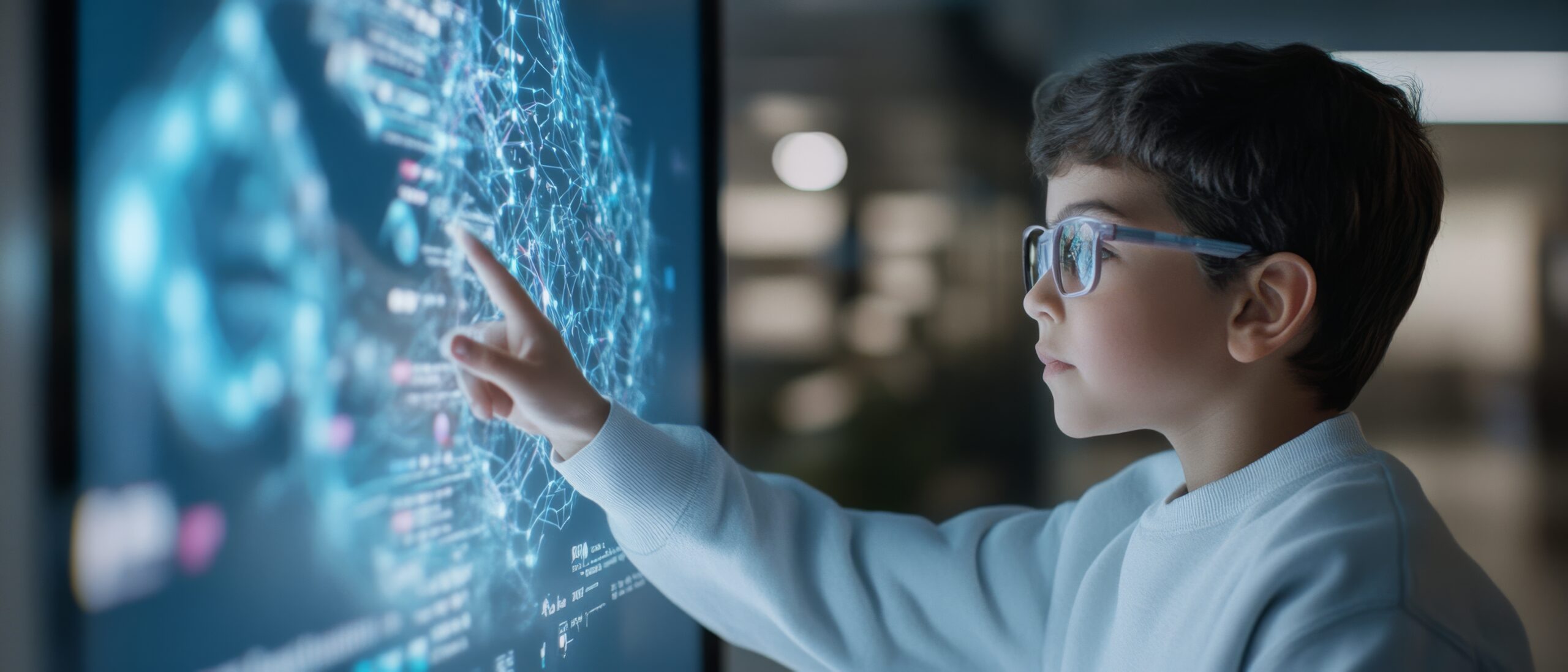Technology is shaking up the way children learn, moving far past old-school textbooks and chalkboards and landing us in a world of dynamic, interactive experiences. From AI tutors to virtual reality classrooms, digital tools are touching every corner of education.
The shift toward technology-enhanced learning is opening up more personalised, engaging, and accessible opportunities for students than we’ve ever seen before. Classrooms now use AI-powered platforms that adjust to each student’s learning style, while immersive tech lets kids “travel” to ancient civilisations or explore inside a molecule.
This digital transformation brings both huge opportunities and some real challenges for educators, parents, and students. Understanding how these advances reshape learning environments helps families navigate the changing landscape and get the most out of what’s possible for kids’ academic growth and future success.
As classrooms grow increasingly digital, parents play a key role in helping children navigate this change. Here are some practical tips for raising tech-savvy kids who can use technology safely and effectively for learning.
The Digital Transformation of Learning

Chalk-and-talk teaching is quickly giving way to tech-driven classrooms where artificial intelligence, virtual reality, and interactive platforms create personalised learning that actually grabs students’ attention. Edtech now shapes the way kids interact with knowledge, turning passive listeners into active participants in their own learning journeys.
Evolution from Traditional to Tech-Enhanced Classrooms
We’ve gone from blackboards to interactive whiteboards, but that’s just the start. Now, classrooms buzz with tablets, laptops, and smartphones, all acting as portals to endless educational content.
Learning management systems have taken over from paper assignments. Students submit work online, get instant feedback, and keep tabs on their progress through personalised dashboards.
The COVID-19 pandemic really sped things up. Schools that previously relied on face-to-face teaching suddenly transitioned to virtual classrooms, online collaboration, and digital assessments.
Modern classrooms blend physical and digital spaces. One moment, students might explore ancient Rome with a VR headset, and the next, they’re collaborating on projects in the cloud.
This evolution isn’t just happening in schools – it’s everywhere, from higher education to professional training. Technology blurs the lines between formal and informal learning, making education something you can access anywhere, any time.
Role of Educational Technology in Modern Education
Edtech is more than just flashy gadgets, it’s totally changing how teachers and students connect. Artificial intelligence now powers adaptive learning platforms that tweak difficulty levels on the fly, based on how each student is doing.
Virtual reality apps drop students right into historical events, inside human cells, or even across galaxies. These experiences make abstract ideas stick in a way that’s hard to forget.
Gamified learning apps turn multiplication tables into challenges and reading comprehension into adventure quests. Kids rack up points, unlock achievements, and compete with classmates in educational games.
Data analytics let teachers spot struggling students before they fall behind. Real-time tracking uncovers learning patterns and points out where intervention could help most.
Mobile learning means the classroom isn’t just in school anymore. Students use their smartphones and tablets to access lessons, do assignments, and join discussions: pretty much wherever and whenever they want.
Changing Dynamics of Student Engagement
Kids today expect learning to be interactive, visual, and relevant. Edtech meets these dem ands with multimedia content (videos, animations, interactive simulations) that brings lessons to life.
Student engagement tends to jump when teachers use technology. Kids who struggle with regular textbooks can thrive when the info comes through digital storytelling or interactive presentations.
Collaborative tools let students work together on projects, even if they’re not in the same place. They share documents, join online discussions, and peer-review each other’s work through digital platforms.
Personalised learning paths accommodate different styles and speeds. Visual learners get infographics and videos, while auditory learners can use podcasts and recorded lectures.
The teacher’s job is shifting, too. Instead of just delivering information, educators now guide students through digital resources, moderate online discussions, and use tech-generated insights to provide personalised support.
Artificial Intelligence: Revolutionising the Classroom

AI is changing how kids learn with personalized tutoring systems, chatbots that give instant feedback, and tools that adapt to individual learning styles. These technologies boost knowledge retention and help teachers create more engaging lessons.
AI’s Impact on Teaching and Learning
Teachers are finding that AI tools amplify what they do best, not replace them. Programs like NSW’s EduChat give students guided feedback on their writing, helping them improve without just handing over the answers.
Students using AI-assisted platforms have shown real gains. At Plumpton High School, for instance, kids went from writing 800-word essays to 1,500-word essays in the same amount of time, with more sophisticated vocabulary, too.
Key teaching transformations include:
- Instant feedback for individual students, even in big classes
- Personalised learning paths that shift to each child’s pace
- Automated assessment tools that spot knowledge gaps
- Real-time progress tracking for targeted help
AI tutors work alongside teachers, answering routine questions so educators can focus on emotional support and complex problems. These systems notice when a student struggles and provide extra resources right away.
With this kind of help, teachers spend more time on creative lesson planning and one-on-one mentoring. Students get 24/7 access to learning support through AI-powered platforms.
The Rise of AI Tools and Chatbots
Educational chatbots are turning into smart learning companions, carrying on interactive conversations with students. They can handle multiple languages and adjust their teaching style to fit each learner.
Schools are rolling out a range of AI platforms – ChatGPT, Google Gemini, and specialised versions like EduChat. Westbourne Grammar uses AI avatars to guide students through creating video games, generating artwork, and working on creative projects safely.
Popular AI applications in classrooms:
|
Tool Type |
Function | Student Benefit |
|
Writing assistants |
Grammar and structure feedback |
Improved literacy skills |
|
Art generators |
Creative visual content |
Enhanced artistic expression |
|
Language tutors |
Conversational practice |
Better communication skills |
| Coding helpers | Programming guidance |
Technical skill development |
Chatbots don’t just give away answers – they push back if students try to cheat, nudging them toward independent thinking. They walk learners through problems step by step instead of handing out solutions.
These tools make quality education more accessible, giving consistent support no matter a student’s background or skill level.
Applications of AI for Knowledge Retention
AI systems are great at reinforcing learning with spaced repetition and adaptive questioning. They track how students retain info and tweak content delivery on the fly.
Memory enhancement features include:
- Personalized review schedules based on how quickly students forget
- Interactive quizzes that adjust difficulty
- Visual learning aids made from text
- Progress tracking that spots weak areas
Students use AI-powered revision tools to create custom study materials from their own coursework. These systems spit out flashcards, practice questions, and summary notes tailored to each student’s needs.
Research suggests students using AI platforms build stronger neural connections for memory. The tech gives instant reinforcement when new concepts pop up, which seems to help with long-term retention.
AI tools keep tabs on which topics trip students up and increase exposure to those areas. This targeted approach tackles knowledge gaps before they get out of hand.
By adding interactive elements that demand participation and critical thinking, the technology turns passive reading into active learning.
Personalised and Adaptive Learning Paths

Technology now makes it possible for education to adjust to each child’s needs, pace, and interests using smart data analysis. These systems craft individualised journeys that respond instantly as students progress or hit roadblocks.
The Shift to Personalised Learning Experiences
One-size-fits-all education is fading fast, replaced by personalised learning that recognises every child’s unique strengths and preferences. Students learn at different speeds and in different ways, and the new tech finally gets that.
Modern platforms track things like learning style, knowledge level, and personal interests, then use that info to deliver content in ways that work best for each student.
This shift isn’t just about tweaking content. Personalised learning paths now include students’ career goals, hobbies, and cultural backgrounds in the mix.
Key personalization elements include:
- Individual pacing: Students move at their own speed
- Content variety: Different formats for different learning preferences
- Interest alignment: Lessons connect with kids’ passions
- Flexible scheduling: Learning happens when students are most receptive
This approach moves away from age-based groups and toward ability-based progression. A student can fly ahead in math while getting extra help in reading, making for a much more individualised journey.
Adaptive Learning Platforms and Techniques
Adaptive learning platforms use AI to constantly adjust instruction based on real-time performance data. These systems make thousands of tiny tweaks during each session.
Platforms like Khan Academy and Duolingo show how adaptive tech responds to each answer. If a kid struggles with fractions, the system automatically serves up more practice and different explanations.
The technology uses a bunch of sophisticated techniques:
|
Technique |
Function |
Example |
|
Rule-based systems |
Follow set decision trees |
If a student gets it wrong twice, give a hint |
|
Machine learning algorithms |
Learn from behavior patterns |
Predict best review timing |
|
Knowledge mapping |
Track understanding of linked concepts |
Spot prerequisite gaps |
|
Real-time assessment |
Continuously check comprehension |
Adjust difficulty mid-lesson |
These platforms collect data from every click, pause, and answer. They notice when students are frustrated, bored, or right in the learning sweet spot, and adjust the material accordingly.
Advanced systems now spot learning patterns across thousands of students. They can even predict which explanations will work best for different types of learners and suggest the best study sequence.
Data-Driven Insights for Tailored Education
Educational data analytics are changing how teachers support individual students. Data-driven insights reveal patterns that might go unnoticed otherwise.
Learning management systems gather detailed info about student behavior—time spent on tasks, common mistakes, engagement levels across subjects and times of day.
This data uncovers important insights:
- Which concepts consistently cause trouble
- Each student’s best learning times
- Most effective teaching methods for different topics
- Early warning signs of academic struggles
Teachers get real-time dashboards showing every student’s progress. They can spot who needs help now and who’s ready for tougher challenges.
Predictive analytics let educators anticipate learning issues before they get serious. The system flags students at risk of falling behind, so teachers can step in early instead of playing catch-up later.
Data also helps improve the curriculum. If lots of students struggle with a topic, teachers can redesign lessons or add resources to target those trouble spots.
Privacy matters, of course. Schools use strict protocols to make sure student info is only used for education and stays safe from unauthorized access.
Enhancing Engagement and Collaboration
Technology is changing the way students connect with learning materials and each other, creating lively spaces where collaboration just happens. Interactive platforms and gamified experiences grab attention and help build teamwork skills along the way.
Collaborative Learning Environments

Digital platforms have completely changed the way students team up on projects and assignments. Virtual classrooms let kids collaborate in real time, sharing documents, jumping into video chats, and scribbling together on interactive whiteboards—even if they’re miles apart.
Now, everyone can jump into a group project at the same time, watching ideas take shape as they go. Cloud-based tools like Google Workspace and Microsoft Teams make sharing and working together feel pretty effortless, everyone gets a say, and nobody’s left out.
Peer feedback systems woven into these platforms nudge students to review each other’s work with a constructive eye. This not only sharpens their critical thinking, but it also helps build a more supportive, close-knit learning community.
Social learning networks built for education offer safe corners for academic chats. Students swap ideas about the material, toss out questions, and share resources without worrying about feeling silly or overlooked.
Discussion forums and chat features built into learning management systems keep the conversation alive long after the last bell rings. Teachers can watch these chats unfold and step in if someone needs a nudge or a little extra help.
Gamification and Interactive Content
Educational games turn tough concepts into bite-sized challenges that actually make learning fun. Points, badges, and leaderboards tap into that innate competitive streak, giving students a reason to celebrate their wins, big or small.
Interactive simulations let students mess around with tricky scientific ideas in a safe space. Virtual labs mean hands-on experiences without the hassle or risks of real equipment.
Choose-your-own-adventure modules let students wander down different learning paths at their own speed. These branching narratives adjust to their choices, so learning feels more personal and less like a one-size-fits-all lecture.
Augmented reality apps make textbook images leap off the page. Suddenly, historical events or science processes aren’t just words – eethey’re right there in 3D, ready to be poked, prodded, and explored.
Educational apps that borrow from popular mobile games grab attention with familiar looks and quick rewards. Progress trackers let students see just how far they’ve come, which can be a huge boost for confidence and motivation.
Interactive quizzes with instant feedback shake up the old test routine, turning assessments into something more engaging and a lot less nerve-wracking.
Immersive and Inclusive Technologies
New tools are tearing down learning barriers and making education genuinely exciting. Virtual reality and augmented reality whisk students into interactive worlds, while text-to-speech and other assistive tech make sure every child gets a seat at the table.
Virtual and Augmented Reality in Education
Virtual reality turns ordinary lessons into full-blown adventures. Students can wander ancient Rome, plunge into the ocean, or zip through the human circulatory system – all without leaving their desks.
Augmented reality layers digital magic onto the real world. Kids point their tablets at a page and suddenly dinosaurs stomp around or math equations solve themselves right before their eyes.
These tools give hands-on experience that helps tricky concepts finally click. If a student’s wrestling with physics, they can move virtual objects and see gravity in action. History comes alive when they can actually walk through recreated moments from the past.
VR and AR create learning memories that stick. Honestly, who remembers a paragraph in a textbook when you’ve “stood” in the middle of a Roman forum?
The tech flexes to fit different learning styles. Visual learners get stunning graphics, hands-on kids can interact with objects, and auditory learners get the sounds and explanations they need.
Assistive Tech: Text-to-Speech and Accessibility Tools
Text-to-speech opens up reading for every child, no matter their challenges. Kids with dyslexia, vision issues, or other reading hurdles can listen along with clear, natural voices and finally keep up with the class.
Modern speech synthesis sounds surprisingly natural. Kids tweak reading speed, pick different voices, and even highlight words as they hear them – helping with both comprehension and pronunciation.
Mobile devices now pack a punch with accessibility features. Voice recognition lets students with physical limitations control computers just by talking. Screen magnifiers help those with vision challenges see what they need.
These tools give all students a fair shot. A child with autism might use a communication app to share their thoughts, while noise-cancelling headphones help them tune out distractions during lessons.
The tech really breaks down old barriers. With nearly 240 million kids worldwide living with disabilities, these innovations finally let everyone join in classroom activities right alongside their peers.
Challenges and the Road Ahead
Educational tech brings a ton of promise, but it’s not all smooth sailing. Data protection, equity, and the rise of artificial intelligence are big topics that schools and families need to tackle head-on.
Data Privacy and Ethical Considerations
Schools now gather huge amounts of student info through apps and digital platforms. Personal data, learning habits, and even behavior patterns add up to detailed profiles that need serious protection.
Key Privacy Concerns:
- Tracking of student browsing and academic performance
- Third parties getting access to sensitive records
- How long data is stored and who can use it down the line
Schools need to roll out clear privacy policies that spell out what data gets collected and why. Parents deserve to know who’s seeing their kids’ info and what they’re doing with it.
Data governance committees review new tech purchases, checking privacy terms, security, and whether platforms meet regulations like GDPR before giving the green light.
Teachers get training on using tech ethically and respecting student privacy. Ongoing professional development helps them understand their responsibilities with digital student info.
Addressing the Digital Divide
Tech gaps are still a huge hurdle for many students trying to jump into digital learning. Socioeconomic status often decides who gets access to these new opportunities and who’s left behind.
Critical Access Barriers:
- Consistent internet at home
- Up-to-date devices that can handle new software
- Reliable tech support for when things break
Rural areas often struggle with weak broadband, while city families might not be able to afford the devices or internet they need.
Schools partner with community groups to offer device lending and Wi-Fi hotspots, helping students stay connected for remote classes and homework.
Government funding for better digital infrastructure is crucial. Programmes that help low-income families get online can make a real difference for students’ futures.
Preparing for the Future of AI in Learning
Artificial intelligence is set to shake up education in the next few years. Schools need to get both students and teachers ready for AI-powered classrooms while still protecting academic honesty.
AI Integration Opportunities:
- Personalised learning paths that adjust to each student
- Automated grading and feedback
- Smart tutoring that’s available anytime
Instead of banning AI, schools should show students how to use it responsibly. Teaching proper citations and using AI as a tool rather than a shortcut builds real critical thinking skills.
Teacher training now includes AI literacy, too. Educators need to understand what these tools can do and where they fit in the classroom.
Schools are drafting AI policies that encourage innovation without crossing into academic dishonesty. Clear rules help students figure out where the line is between getting help and cheating.
Frequently Asked Questions
Technology is changing the way kids learn, making things more interactive, personal, and collaborative. Parents play a huge part in supporting digital skills, while schools keep rolling out new ways to blend tech into lessons.
-
How is technology revolutionising the classroom experience for our vibrant young learners?
Tech creates learning environments that actually grab students’ attention. Virtual reality lets kids step into ancient civilizations or even inside the human body. AI tailors lessons to each student’s pace and style.
Interactive whiteboards have replaced old chalkboards, letting students move things around and play with ideas on the fly. Collaboration tools mean students can share and build on each other’s ideas instantly. Gamification turns even tough subjects into something like an adventure.
Students have instant access to a world of information on their tablets and laptops. Video calls bring in guest experts from anywhere. Digital simulations offer a safe way to experiment in subjects like chemistry and physics.
-
What are the most captivating digital tools currently transforming educational engagement?
Augmented reality makes textbook illustrations pop into 3D, so students can get up close with molecules or artifacts. Educational games reward problem-solving and thinking outside the box.
AI tutors give instant feedback on homework and quizzes. Voice recognition helps with language practice. Digital storytelling platforms inspire creativity and multimedia skills.
Learning management systems make homework and grades easier to track. Interactive simulations let students try out complex concepts hands-on. Coding platforms teach programming through simple, visual tools.
-
In what ways can parents contribute to their child’s digital learning journey with sheer enthusiasm?
Parents can dive into educational apps with their kids to see what they’re learning. Chatting about digital discoveries and celebrating online wins keeps kids motivated. Setting up a quiet spot for virtual lessons at home helps with focus.
Keeping an eye on screen time ensures a good balance with offline activities. Parents can look for educational content that matches what’s happening at school. Joining virtual parent-teacher meetings keeps everyone on the same page.
Encouraging kids to show off new digital skills to the family builds confidence. Parents set the tone for responsible tech use and digital citizenship. Sometimes a family project using technology can be a fun way to learn together.
-
How do we ensure that children stay safe online while exploring a world of interactive learning?
Schools put strong cybersecurity in place to guard student data. Educational platforms use content filters and monitoring to keep things age-appropriate. Teachers learn how to spot and prevent cyberbullying.
Digital citizenship lessons teach kids how to act responsibly online. Password safety and privacy settings are part of the curriculum, so students know how to protect their accounts and data.
Regular chats about suspicious online stuff help students know when to speak up. Parental controls at home back up school safety efforts. Clear rules set boundaries for what’s okay during online learning.
-
Could you shed some light on the exciting prospects for personalised learning through technology?
AI analyses how each student learns and customises content to fit. Adaptive platforms tweak difficulty based on performance, so kids move at a pace that works for them.
AI tutors spot where a student needs help and offer targeted support. Machine learning suggests resources based on interests. Personal feedback helps students learn from mistakes and grow.
Technology adapts to all kinds of learning styles – visual, auditory, hands-on. Multilingual learners get content in their preferred language. Kids with learning differences can use specialised tools and accommodations to succeed.
-
What are some innovative approaches that schools are taking to integrate technology seamlessly into their curriculum?
Schools set up dedicated innovation labs where students get to play around with emerging technologies. Cross-curricular projects blend subjects like science and art using digital tools. Maker spaces filled with 3D printers and robotics kits let kids dive into hands-on creation.
Teachers join professional development programs to get comfortable with new educational tech. Student tech teams jump in to help classmates and teachers with digital hiccups. Some schools reach out to tech companies and try out the latest educational software together.
Flexible learning environments shift to fit different tech setups as the day goes on. Digital portfolios let students show off their work and growth over time. Schools even set up tech mentorships, pairing older students with younger ones to share tips and tricks.





